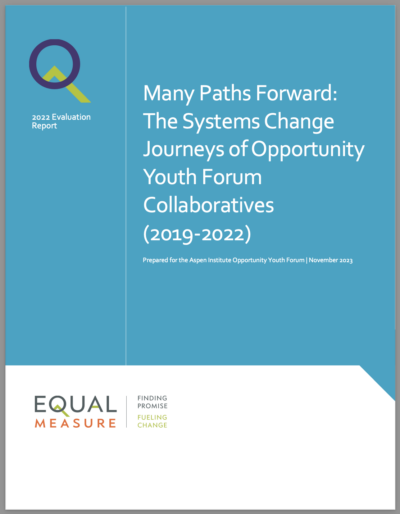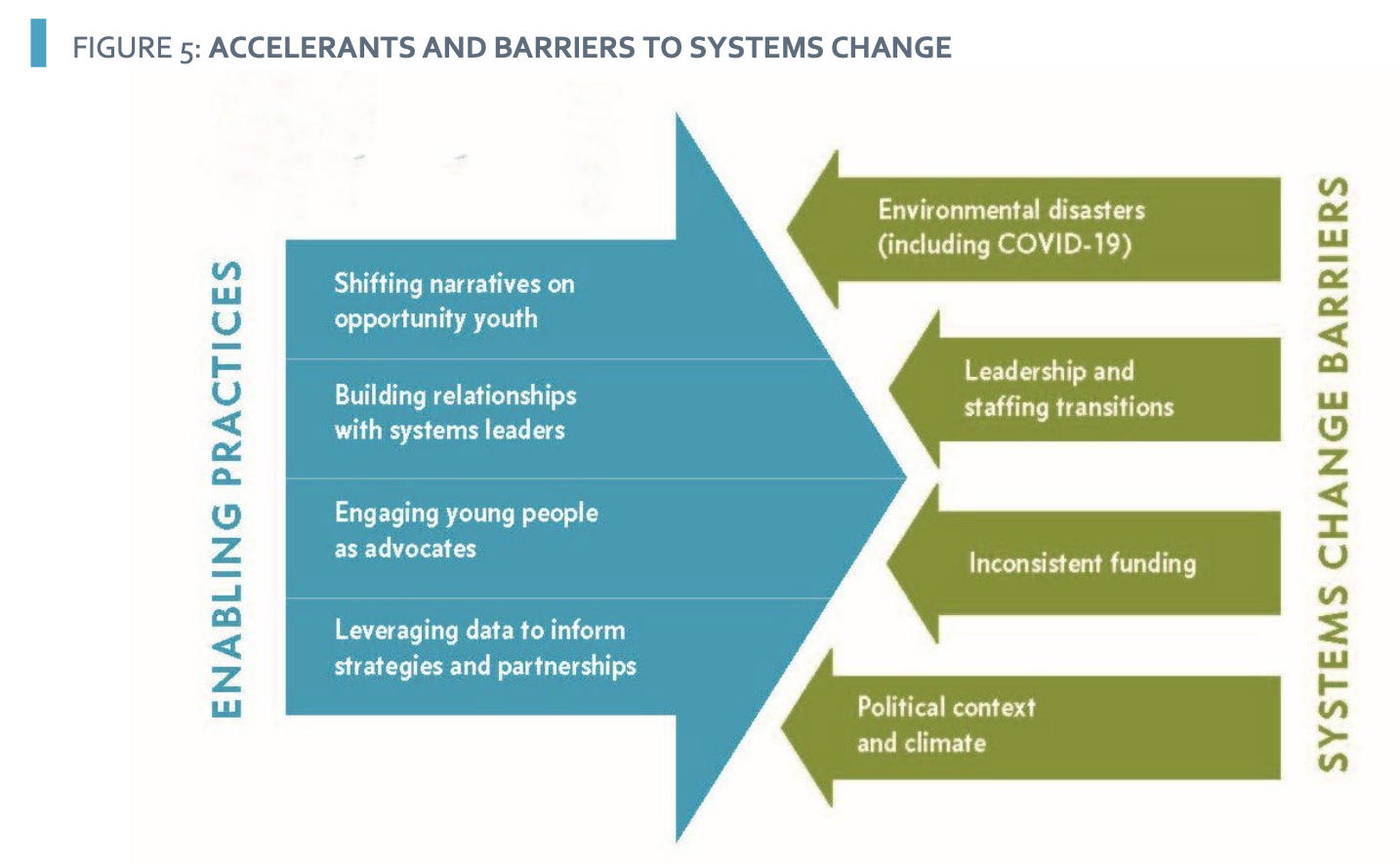
Each year, the Opportunity Youth Forum‘s external evaluators, Equal Measure, conduct an extensive assessment of the progress of OYF, looking at the characteristics of collaboratives, and collaborative capacity topics. They also assess, annually, progress made on systems-level changes in OYF communities (these include such things as policy and funding changes, and cross-system pathways, among other areas). In this year’s report, Equal Measure has done an in depth look at systems changes across OYF communities, over the past four years. Their annual survey was supplemented by interviews with OYF site leaders, from which they were able to develop a set of common factors that aided systems change achievements, as well as a list of the most common barriers to accomplishing systems change.
Systems Changes in the OYF Network, 2019-2022
The OYF network has grown significantly over the last four years from 27 collaboratives in 2019 to 43 collaboratives in 2022 – a 59% increase. As the network has expanded, its characteristics, the communities served, and the backbone organizations that coordinate the OY efforts have also shifted.
Each year, the collaboratives assess the state of systems in their communities – namely, shifts in public policies at different levels, availability of public and private funding for opportunity youth, using data across systems, narratives about opportunity youth and public awareness, and education to career pathway alignment and scaling. From 2019 to 2022, systems change in the OYF network has been steady, even as new collaboratives joined the network.
Despite the potential for roadblocks to emerge and the fits and starts of systems change, many OYF collaboratives have been able to maintain and improve systems change progress over the years. Through interviews conducted with OYF site leaders, Equal Measure categorized a set of strategies collaboratives have used to help maintain momentum on their systems change pursuits, “weathering the storm” through the conditions and contexts that can impede progress. This diagram summarizes the factors that speed, and slow, systems change progress:

Equal Measure concludes by saying:
“OYF communities’ systems change journeys are as varied and diverse as the network itself. Systems change work, by its nature, is complicated. It responds to local and national politics. It reacts to shifts and transitions in relationships and leadership. It speeds up and slows down with shifts in the public’s interests and discourse. Importantly, these journeys are neither linear nor predictable. Short-term (i.e., annual) advances and declines are typical in systems change efforts and should be expected for complex, multi-actor, multi-step processes. And while we can learn about these efforts, including what facilitates and stalls changes in the short term, we should consider a longer-term window for understanding their progress and success.”
For more information on this topic, and other findings from across the OYF network, please see the OYF 2022 Annual Assessment: